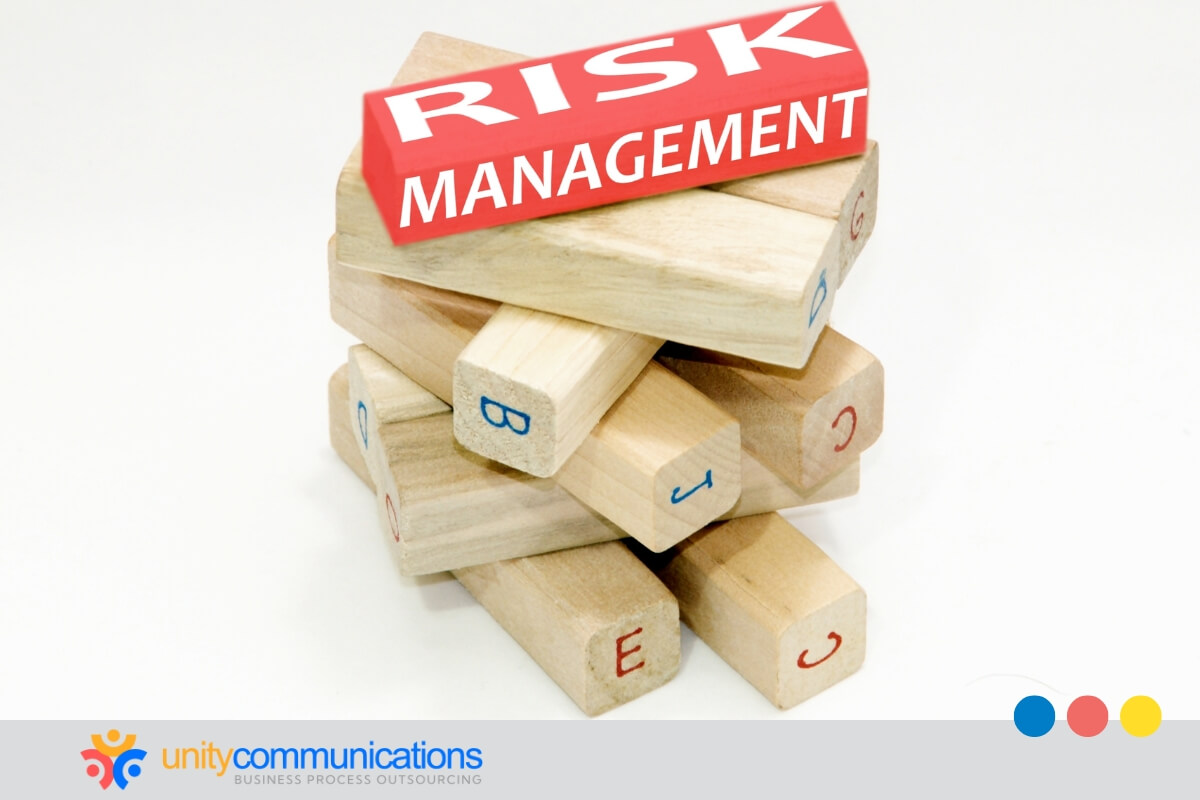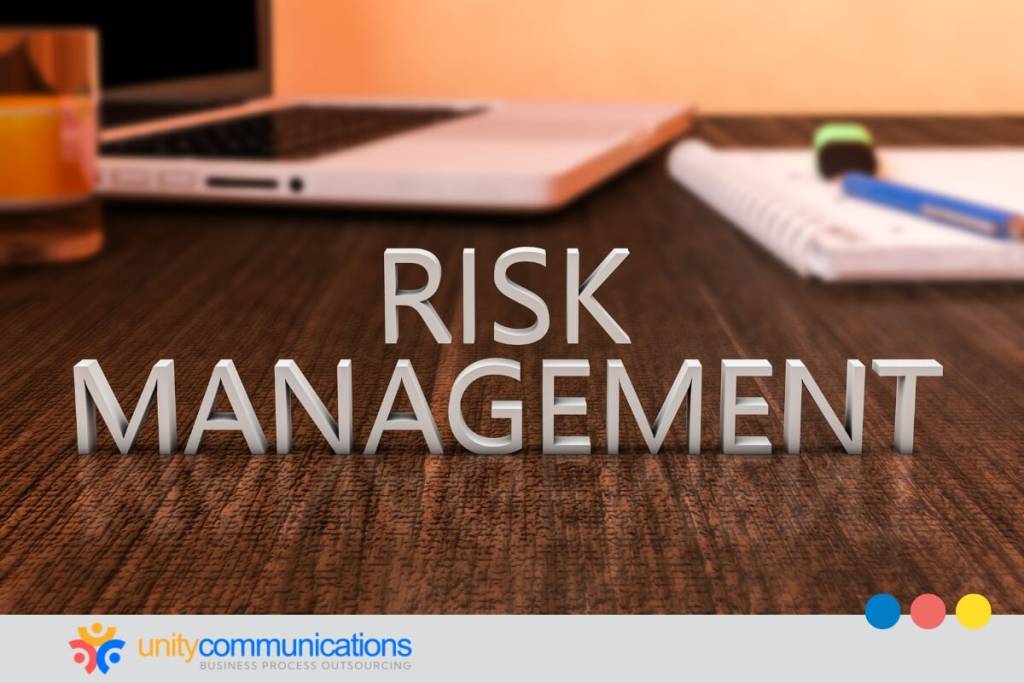Table of Contents
Effective risk management is crucial in a fast-growing industry such as business process outsourcing (BPO), where service providers supervise critical business functions on behalf of client companies. Understanding and mitigating risks inherent to BPO operations safeguard business continuity and fortify resilience against unforeseen challenges.
This article delves into the importance of a BPO risk management framework, highlighting the essential components of a robust strategy. Keep reading to learn valuable insights.
Essential elements of a BPO risk management framework

A BPO risk management framework is a set of guidelines designed to identify, assess, prioritize, and mitigate business risks associated with outsourcing to third-party service providers.
This framework serves as a blueprint for managing various risks that might arise throughout the outsourcing lifecycle, from initial vendor selection to ongoing operations and contract management.
By implementing a robust risk management framework tailored to the specific requirements of BPO operations, organizations can address potential threats and enhance operational resilience. This plan also optimizes the value of outsourcing partnerships while safeguarding parties’ interests and reputations.
A comprehensive risk management framework should encompass several key elements tailored to the unique dynamics of business process outsourcing agreements, such as:
Addressing potential quality and efficiency issues
Addressing potential quality and efficiency issues in BPO operations requires a proactive approach. Vendors must thoroughly map all outsourced processes to identify potential risks at each stage. This involves understanding dependencies, handoffs, and critical control points.
To do so, develop a comprehensive inventory of risks specific to BPO operations, considering factors such as vendor reliability, data security, regulatory compliance, and geopolitical risks. Evaluate identified risks based on their likelihood of occurrence and potential impact on business objectives. Prioritize risks to focus mitigation efforts effectively.
Lastly, embrace technology and automation tools to streamline processes, improve accuracy, and enhance efficiency in BPO operations. Implementing workflow automation, robotic process automation (RPA), and artificial intelligence (AI)-driven solutions can reduce manual errors, accelerate task completion, and optimize resource utilization.
Having a contingency plan
An essential part of the BPO risk management framework is anticipating potential risks and developing contingency plans to mitigate disruptions that can affect quality and efficiency in BPO operations. Service vendors must identify critical dependencies, establish backup processes, and implement strategies to minimize the impact of unforeseen events.
Here’s a step-by-step guide:
- Risk identification and assessment. Conduct a thorough assessment to identify risks, such as natural disasters, cyberattacks, data breaches, regulatory changes, geopolitical instability, or staffing shortages. Evaluate the likelihood and potential impact of identified risks and prioritize them based on severity.
- Business impact analysis (BIA). Perform a BIA to quantify the financial, operational, and reputational consequences of potential disruptions. Identify key dependencies, critical processes, and resource requirements to maintain business continuity during adverse events.
- Contingency planning. Establish a cross-functional team responsible for developing and implementing the contingency plan. Include representatives from relevant departments, such as operations, information technology (IT), finance, and legal, to ensure comprehensive coverage and alignment with organizational goals.
- Response strategy development. Develop response strategies to address identified risks based on the risk assessment and BIA results. These include determining alternative sourcing options, establishing backups, implementing cybersecurity measures, or renegotiating vendor contracts.
- Communication planning. Develop a communication plan for timely and transparent communication with stakeholders during a crisis. Define communication channels, roles, and responsibilities for disseminating information to internal teams, clients, vendors, regulatory authorities, and other relevant parties.
- Testing and training. Conduct regular testing and training to validate the effectiveness of the contingency plan and familiarize employees with their roles during a crisis. Perform simulations to identify gaps, refine response strategies, and improve overall preparedness.
Reviewing contracts thoroughly
Another essential part of the BPO risk management framework is thoroughly reviewing contracts. What is a BPO contract? It serves as the legal foundation of the outsourcing relationship. It outlines the rights, obligations, responsibilities, and expectations of both the client and the BPO provider.
Here’s a step-by-step guide to conducting a thorough contract review:
- Gather and organize contract documents. Collect all relevant contract documents, including the master services agreement (MSA), statements of work (SOWs), service-level agreements (SLAs), and any amendments or addendums. Organize the documents for a quicker review process.
- Understand business objectives and requirements. Before diving into the contract details, know your business objectives, operational requirements, and desired outcomes from the outsourcing arrangement.
- Review contract scope and definitions. Review the contract scope and definitions to ensure clarity and alignment with the organization’s expectations. Verify that the services, deliverables, timelines, and performance metrics are clearly defined and measurable.
- Assess risk allocation and liability provisions. Evaluate the contract’s risk allocation and liability provisions to understand how parties allocate risks. Review indemnification clauses, limitations of liability, insurance requirements, and dispute resolution mechanisms to mitigate potential legal and financial risks.
- Document findings and recommendations. Document the findings of the contract review, including identified risks, areas for improvement, and recommended changes or negotiation strategies. Collaborate with legal counsel and relevant stakeholders to negotiate contract terms, address identified risks, and finalize the agreement.
Leveraging risk assessment software
Reports show that 41% of organizations have encountered three or more critical risks in 2022. Leveraging risk assessment software as part of the BPO risk management framework can significantly enhance its efficiency, accuracy, and effectiveness.
Here’s how BPO organizations can use risk assessment software within their risk management framework:
- Centralized risk repository. Implement risk assessment software to centralize data management. This program consolidates information on risks, assessments, mitigation strategies, and incident reports in a single platform accessible to relevant stakeholders.
- Real-time risk monitoring and reporting. Leverage risk assessment software to monitor risk indicators and track changes in risk exposure in real time. Generate automated reports, dashboards, and alerts to provide stakeholders with timely insights into emerging risks, mitigation activities, and overall risk posture.
- Scenario analysis and risk modeling. Conduct scenario analysis and risk modeling to assess the potential impact of various risks on BPO operations. Evaluate their likelihood and severity and mitigate them.
Designing robust data security measures
Several risks are associated with cloud hacking, automation errors, and data security issues, especially for providers working with financial institutions. BPO operations often involve storing and processing sensitive data, such as personal and financial information.
Data security risks include unauthorized access, ransomware attacks, and other cyber threats that compromise data confidentiality, integrity, and availability.
Cloud hacking poses a significant risk of data breaches, where unauthorized parties gain access to confidential data stored in cloud environments. Data breaches cost the BPO industry an average of $3.8 million.
Errors in automated processes can also disrupt BPO operations, leading to delays, glitches, and inefficiencies in service delivery. Automated systems can malfunction or produce inaccurate results, affecting the quality and reliability of outsourced services.
Mitigating these risks requires a comprehensive approach that includes:
- Implementing multi-layered security measures, such as access controls, encryption, security monitoring, and intrusion detection systems, to protect cloud infrastructure and data.
- Conducting regular security audits, vulnerability assessments, and penetration testing to identify and address vulnerabilities in cloud environments and automated systems.
- Providing cybersecurity awareness training and education to BPO employees to recognize and mitigate security threats, including phishing attacks, social engineering, and insider threats.
- Establishing incident response plans, disaster recovery procedures, and business continuity strategies to mitigate the impact of security incidents, automation errors, and data breaches.
- Ensuring compliance with relevant data protection regulations, industry standards, and contractual obligations through ongoing monitoring, assessment, and enforcement of data security policies and procedures.
The bottom line

In an era of unprecedented volatility and complexity in the global marketplace, BPO firms must adopt proactive measures to identify, assess, and mitigate risks across various domains.
By integrating fundamental elements of BPO risk management frameworks into the strategy, service providers can navigate uncertainties confidently and harness opportunities for sustainable growth and competitive advantage.
Let’s connect to learn more about outsourcing and risk management best practices.




